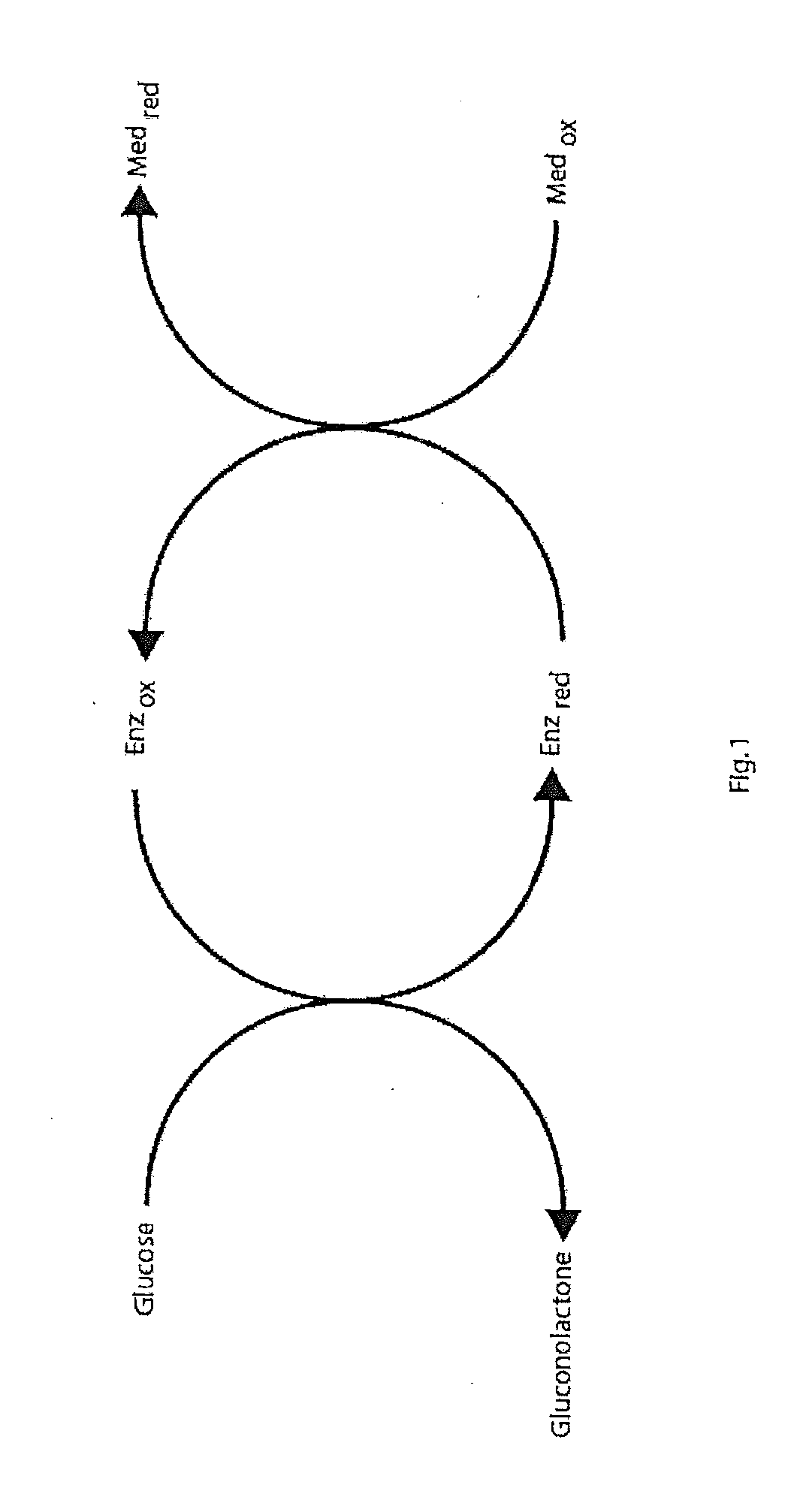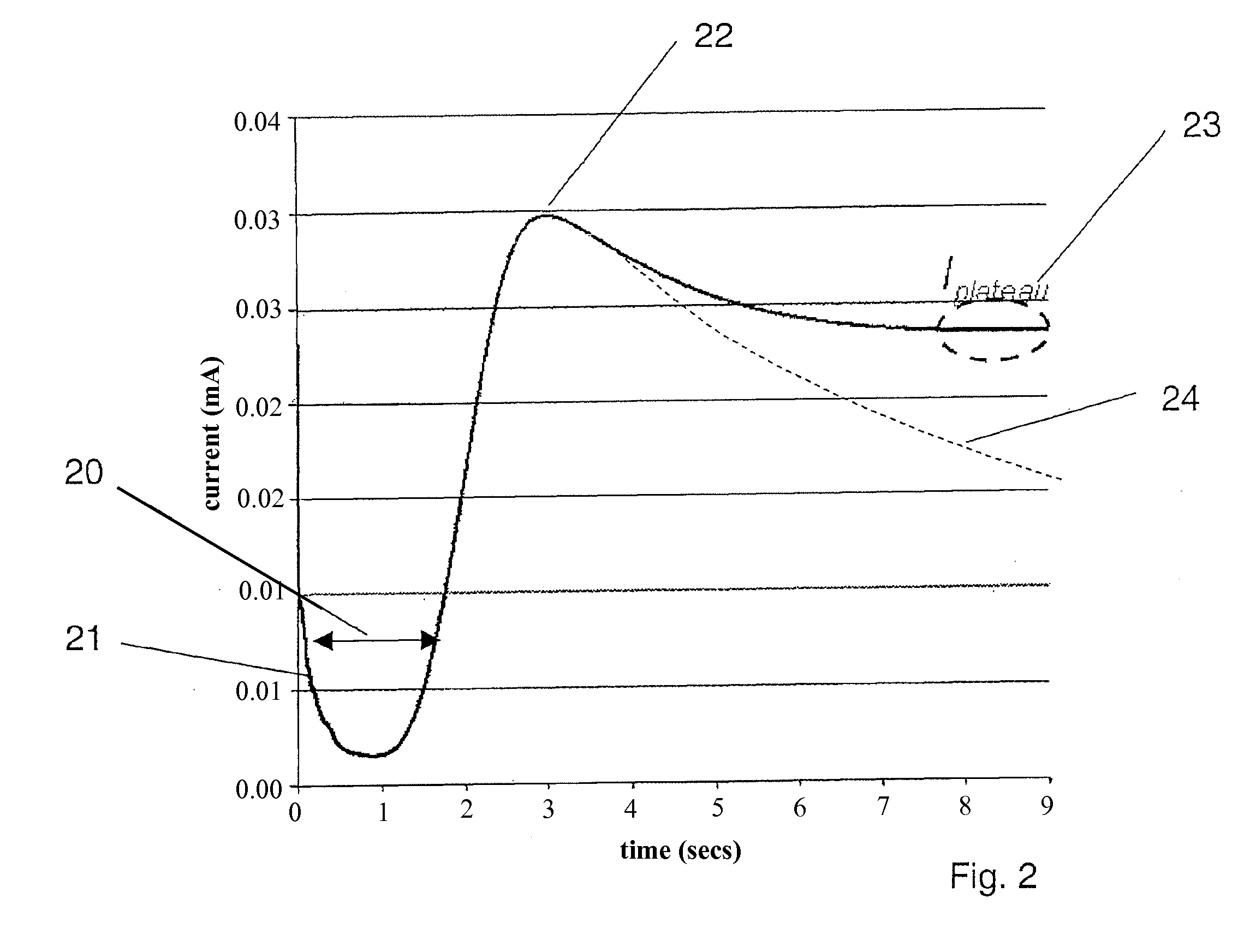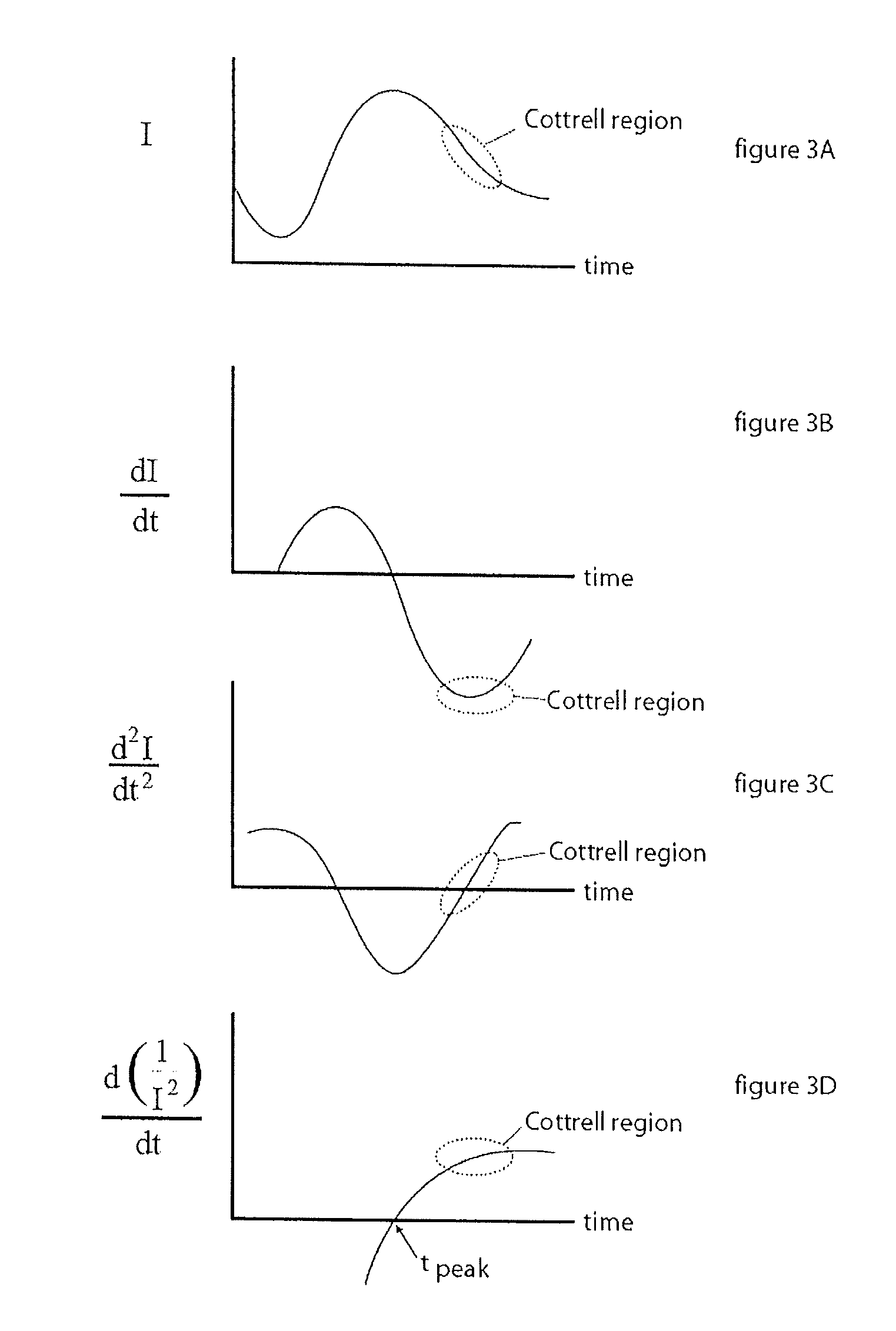Method for Determination of Analyte Concentrations and Related Apparatus
a technology of electrochemical test strips and analyte concentration, which is applied in the direction of liquid/fluent solid measurement, material electrochemical variables, instruments, etc., can solve the problems of inability to deal with samples and test devices, lengthen the time required for a measurement, etc., and achieves improved reliability, reduced time required, and superior performance.
- Summary
- Abstract
- Description
- Claims
- Application Information
AI Technical Summary
Benefits of technology
Problems solved by technology
Method used
Image
Examples
example 1
[0071]A meter with dynamic determination of tmeas using tpeak was used to evaluate finger-stick blood samples from a number diabetic patients, with no selection based on ages, genders, or ethnicity. The samples thus encompassed a good spread of blood physiologies, including different hct levels and different glucose levels. The test strip employed had facing screen printed carbon electrodes, and a nominal sample volume of 625 nanoliters. Since tpeak depends on both mobility of mediator (affected by hct) and by the concentration of glucose (if there is higher glucose, then more of the mediator must diffuse to the counter electrode, thereby taking more time), this sampling produced signals with a good range of different tpeak values.
[0072]The meter did the measurement, which was to do amperometry until enough Cottrell data was gathered (tmeas region), and made glucose determinations based on the Cottrell data. The meter also stored the total time from sample introduction to LCD displa...
example 2
[0073]In order to determine the appropriate coefficient to apply in modifying tpeak to determine tmeas, measurements are taken on matrix of samples with a range of hct and glucose concentrations in amperometric mode. An exemplary matrix is[0074]hct=0, 20, 40, 60, 65%[0075][glu]=˜2 mM up to ˜30 mM
[0076]although the important thing is to select ranges that are representative of typical users. For each each glu / hct combination, replicate measurements are made, and the amperometric data (current vs. time) is compiled.
[0077]The data is processed in any of several different ways (as described in FIGS. 3A-D to arrive a value of tmeas. for each data point. The relationship between tpeak and tmeas for all the data spanning the range of glucose concentration and hct levels is plotted. The plotted data points are then fit to a linear model, indicating whether the correction is best modeled as an additive correction, a multiplier, or both. Other models with additional terms may also be employed...
PUM
 Login to View More
Login to View More Abstract
Description
Claims
Application Information
 Login to View More
Login to View More - R&D
- Intellectual Property
- Life Sciences
- Materials
- Tech Scout
- Unparalleled Data Quality
- Higher Quality Content
- 60% Fewer Hallucinations
Browse by: Latest US Patents, China's latest patents, Technical Efficacy Thesaurus, Application Domain, Technology Topic, Popular Technical Reports.
© 2025 PatSnap. All rights reserved.Legal|Privacy policy|Modern Slavery Act Transparency Statement|Sitemap|About US| Contact US: help@patsnap.com



